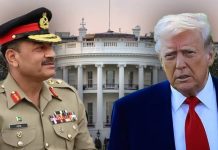Tensions between India-Pakistan have surged dramatically following a deadly missile strike by India on multiple locations in Pakistan and Pakistan-administered Kashmir, which killed at least eight people, including a child. The incident has deepened the rift between the two nuclear-armed neighbours, raising fears of an impending conflict.
India Launches Operation Sindoor: What Triggered the Strikes?
The Indian missile strikes—dubbed Operation Sindoor—were reportedly in retaliation to a brutal attack on tourists in Pahalgam, a town in Indian-administered Kashmir, on April 22. In that attack, 26 people were killed, including 25 Hindu tourists and one local guide, after gunmen separated men from women and targeted male non-Muslims. India blamed the assault on a Pakistan-backed group, The Resistance Front, though Islamabad has vehemently denied involvement and called for an impartial investigation.
The Indian government, led by Prime Minister Narendra Modi, vowed retaliation. Modi declared that the perpetrators would be hunted “to the ends of the earth.” This strike marks India’s most expansive attack inside Pakistan since the 1971 war.
Where Did India Strike in Pakistan?
According to Pakistani military spokesperson Lt. Gen. Ahmed Sharif Chaudhry, Indian missiles struck six locations—four in Punjab province and two in Pakistan-administered Kashmir—around 1 a.m. local time.
- In Punjab province, the key targets were:
- Ahmedpur Sharqia (near Bahawalpur): A mosque compound was destroyed, killing five, including a three-year-old girl.
- Muridke, a village near Sialkot, and Shakar Garh were also struck.
- In Pakistan-administered Kashmir, strikes were reported in:
- Muzaffarabad
- Kotli, where two mosques were flattened, and two teenagers—aged 16 and 18—were among the dead.
The attacks left at least eight civilians dead and over 35 injured. Following the strikes, Pakistan’s Punjab province declared a state of emergency, with hospitals on high alert and schools closed.
How Did Pakistan Respond to the Indian Strike?
Pakistan’s military scrambled fighter jets shortly after the strikes. Prime Minister Shehbaz Sharif took to social media, confirming that a “reply was being given” to India.
Pakistani officials, including Defence Minister Khawaja Asif and Information Minister Attaullah Tarar, claimed their forces shot down five Indian jets, including three Rafale aircraft. These jets are among the most advanced fighters in India’s arsenal, procured from France in recent years.
However, Pakistan also acknowledged that India had fired all missiles from within its own airspace, raising questions about how the jets were downed. India has not officially confirmed or denied Pakistan’s claims.
What is Operation Sindoor?
India named the military operation Operation Sindoor, after the red powder worn by married Hindu women. The symbolic reference is tied to the April 22 attack, where widowed wives were left behind after gunmen deliberately killed their husbands.
The name emphasizes retaliation, the emotional and religious symbolism of the massacre. Survivors had detailed how the attackers segregated and selectively killed Hindu men, making the symbolism of “sindoor” a message of mourning and defiance.
The Diplomatic Fallout; Rising Tensions
In the wake of the missile attacks, India-Pakistan relations have sharply deteriorated:
- India suspended its involvement in the Indus Waters Treaty, threatening Pakistan’s water access.
- Visas for Pakistani nationals were revoked and diplomats expelled by both nations.
- Borders and airspace were closed, with tensions spilling into economic and diplomatic arenas.
- Pakistan threatened to withdraw from the Shimla Agreement, the historic pact that governs bilateral relations.
- In Indian-administered Kashmir, authorities detained over 2,000 people, demolished alleged militants’ homes, and imposed strict curfews.
What Lies Ahead for India-Pakistan?
The world is watching as India-Pakistan tensions hover on the brink of military conflict. While India claims its strike was a measured response to terrorism, Pakistan has vowed to retaliate proportionately, and the two sides have entered a dangerous phase with open threats, military deployments, and no immediate signs of de-escalation.
Both sides are under increasing international scrutiny to prevent an all-out war between two nuclear-armed states, especially as civilian casualties mount and hostilities intensify.
Read more: India Fires IMF Director in Attempt to Derail $2.3 Billion Aid Package to Pakistan


























